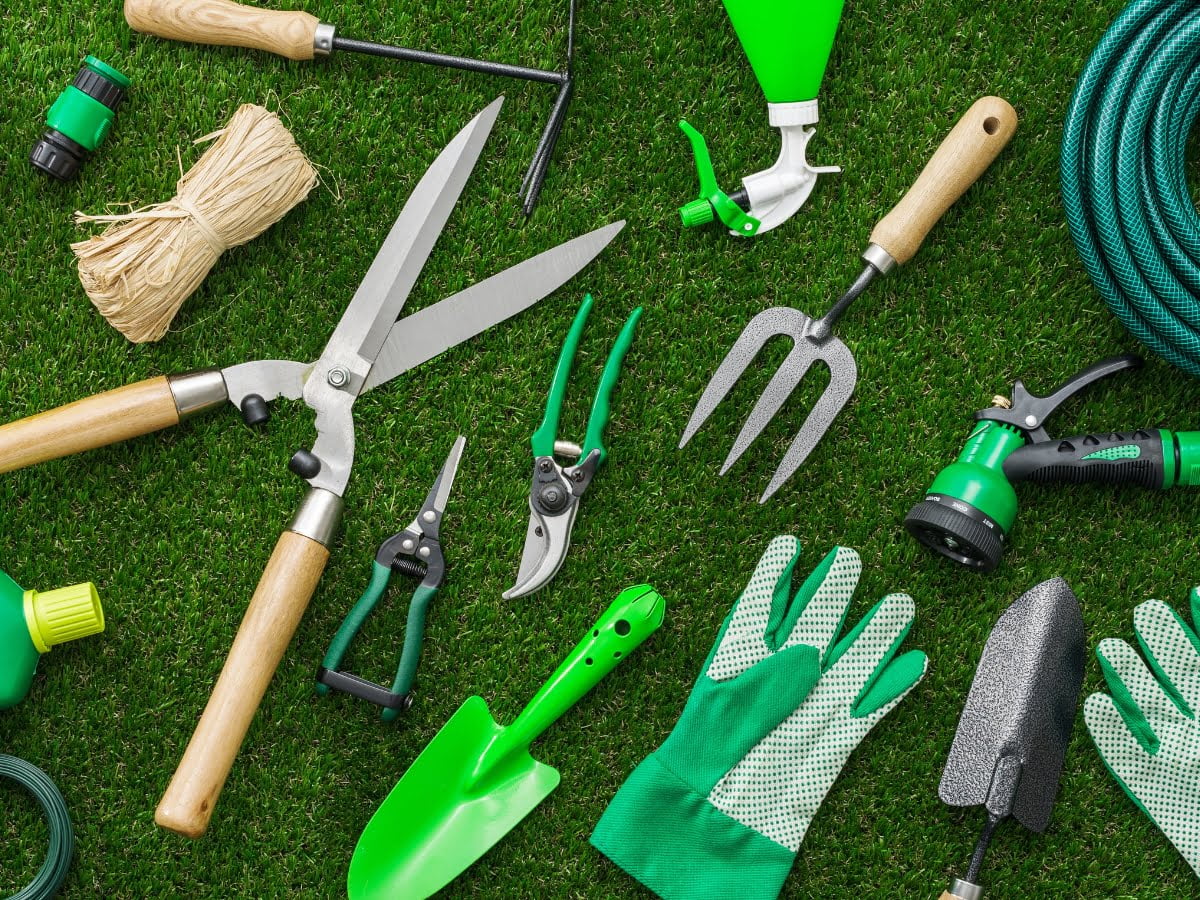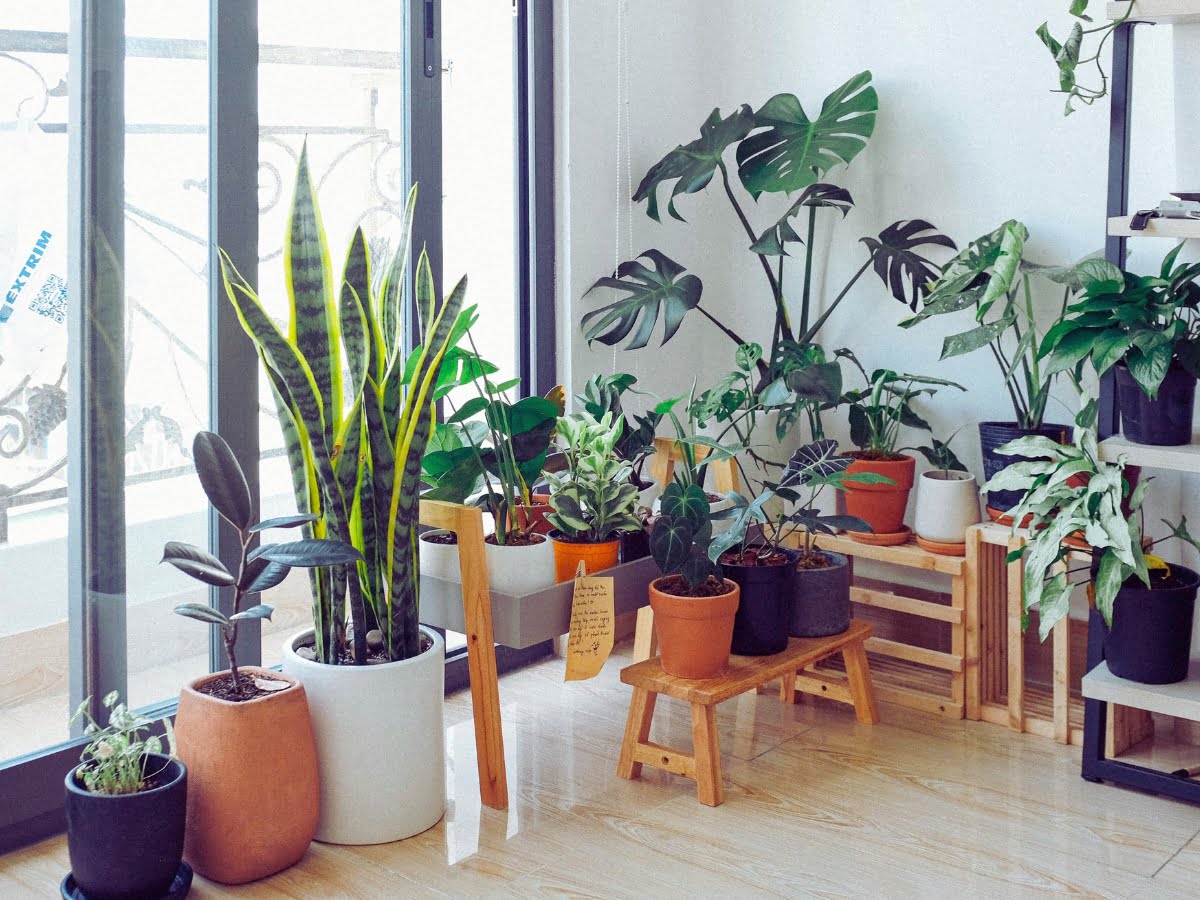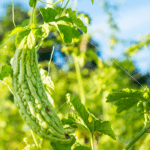Gardening: The Ultimate Path to Happiness and Fulfillment
Gardening has always held a special place in our hearts, and its significance goes beyond mere aesthetics. In India, the importance of gardening is deeply rooted in our culture and traditions. It is a way of connecting with nature, nurturing life, and reaping the numerous benefits it offers. In this comprehensive analysis, we delve into the world of gardening and explore its multifaceted impact on our lives. From understanding its importance to uncovering its extensive benefits, we embark on a journey that highlights the power of gardening in transforming our physical, mental, and environmental well-being.
1. The Significance of Gardening: A Comprehensive Analysis
1.1 Understanding the Importance of Gardening
Gardening holds immense importance in our lives, serving as a gateway to a sustainable and fulfilling lifestyle. It allows us to cultivate a deep bond with nature and instills a sense of responsibility towards preserving our environment. Through gardening, we become stewards of the Earth, contributing to the overall well-being of our planet.
1.2 Exploring the Benefits of Gardening
1.2.1 Health Benefits of Gardening
Engaging in gardening activities provides a multitude of health benefits. The physical exertion involved in tasks such as digging, planting, and weeding serves as an excellent form of exercise. It improves cardiovascular health, strengthens muscles, and enhances flexibility. Moreover, spending time in the garden exposes us to vitamin D, reducing the risk of various diseases and boosting our immune system.
1.2.2 Mental and Emotional Benefits of Gardening
Gardening is a therapeutic activity that promotes mental well-being. It acts as a natural stress reliever, allowing us to disconnect from the demands of daily life and find solace in the beauty of nature. The process of nurturing plants and witnessing their growth instills a sense of accomplishment and boosts self-esteem. Additionally, gardening has been shown to reduce symptoms of anxiety and depression, improving overall mental health.
1.2.3 Environmental Benefits of Gardening
Gardening plays a vital role in preserving our environment and promoting sustainability. By cultivating plants, we contribute to the reduction of greenhouse gases, as they absorb carbon dioxide and release oxygen. Additionally, gardens act as microhabitats, providing shelter and food for various wildlife species. Through organic gardening practices, we can minimize the use of harmful chemicals, thus protecting our ecosystem.
2. Getting Started with Gardening
2.1 Gardening for Beginners
If you’re new to gardening, fear not! Getting started is easier than you think. To embark on your gardening journey, you’ll need some essential tools and equipment. Gather items such as a trowel, pruners, gloves, watering can, and a rake. These tools will become your trusted companions as you nurture your garden to life.

2.1.1 Essential Tools and Equipment for Beginners
Let’s explore the must-have tools and equipment that every aspiring gardener should possess:
- Trowel: This handheld tool is perfect for digging small holes, transplanting seedlings, and loosening soil.
- Pruners: Essential for trimming plants, removing dead or diseased branches, and maintaining plant health.
- Gloves: Protect your hands from thorns, sharp edges, and soil-borne pathogens with a sturdy pair of gardening gloves.
- Watering Can: Ensure your plants receive adequate hydration by using a watering can with a gentle showerhead attachment.
- Rake: Ideal for leveling soil, removing debris, and creating a smooth surface for planting.
2.1.2 Choosing the Right Location for Your Garden
Selecting the right location is crucial for the success of your garden. Consider factors such as sunlight exposure, soil quality, and accessibility. Most plants thrive in areas that receive at least six hours of direct sunlight daily. Assess the soil type in your chosen spot to determine its drainage capabilities and nutrient content. Finally, ensure that your garden is easily accessible for watering, maintenance, and enjoyment.
2.1.3 Soil Preparation and Composting
Preparing the soil is a vital step in creating a thriving garden. Start by removing weeds, rocks, and debris from the area. Loosen the soil using a garden fork or tiller to improve aeration and drainage. Incorporate organic matter such as compost or well-rotted manure to enrich the soil with essential nutrients. Composting kitchen scraps and yard waste is an excellent way to create nutrient-rich compost for your garden.
2.2 Selecting the Right Plants
Choosing the right plants for your garden is essential to ensure their successful growth and development. Consider factors such as climate, available space, and personal preferences when selecting plants. Let’s explore some popular types of gardening:
2.2.1 Vegetable Gardening
Vegetable gardening allows you to grow your own nutritious produce right at home. Start by selecting vegetables that thrive in your climate and align with the available space in your garden. Popular choices include tomatoes, peppers, cucumbers, leafy greens, and herbs. Remember to provide adequate water, sunlight, and proper care to ensure a bountiful harvest.
2.2.2 Flower Gardening
Flower gardening adds beauty, color, and fragrance to your outdoor space. Choose flowers based on their bloom time, sunlight requirements, and soil preferences. Annuals like marigolds and petunias provide vibrant displays throughout the season, while perennials like roses and lilies offer long-lasting beauty year after year. Incorporating a variety of flowers attracts pollinators and enhances biodiversity in your garden.
2.2.3 Herb Gardening
Herb gardening allows you to cultivate your own fresh herbs, adding flavor and aroma to your culinary creations. Select herbs that suit your culinary preferences and growing conditions. Common herbs such as basil, mint, rosemary, and cilantro thrive in Indian climates. Plant them in containers or designated herb beds, ensuring they receive adequate sunlight and well-drained soil.
2.2.4 Indoor Gardening
Indoor gardening is an excellent option for those with limited outdoor space. It allows you to bring the beauty of nature inside your home while enjoying the benefits of gardening. Choose houseplants that thrive in indoor conditions, such as pothos, spider plants, peace lilies, and succulents. Provide them with appropriate lighting, humidity, and regular watering to ensure their well-being.

2.3 Organic Gardening
Organic gardening embraces sustainable practices that prioritize the health of both plants and the environment. It involves minimizing the use of synthetic chemicals and focusing on natural solutions. Let’s explore the benefits and techniques of organic gardening.
2.3.1 Benefits of Organic Gardening
Organic gardening offers several benefits, both for your health and the environment. By avoiding synthetic pesticides and fertilizers, you reduce the risk of harmful chemical exposure to yourself and your family. Organic produce is also known to contain higher levels of essential nutrients and antioxidants. Additionally, organic gardening promotes soil health, biodiversity, and the overall balance of the ecosystem.
2.3.2 Organic Pest Control Methods
Controlling pests in an organic garden requires a proactive and holistic approach. Implement integrated pest management techniques to minimize damage while maintaining the ecological balance. Some organic pest control methods include companion planting, beneficial insect attraction, manual removal of pests, and the use of organic insecticides like neem oil or soap sprays.
2.3.3 Composting and Natural Fertilizers
Composting is a fundamental practice in organic gardening that allows you to recycle kitchen scraps and garden waste into nutrient-rich soil amendments. Create a compost pile or use a compost bin to decompose organic matter, turning it into “black gold” for your garden. Additionally, natural fertilizers such as bone meal, compost tea, and seaweed extracts provide organic nutrients to nourish your plants.
3. Designing Your Garden
Designing your garden is an opportunity to unleash your creativity while creating a space that is both aesthetically pleasing and functional. Consider the following aspects when designing your garden:
3.1 Garden Layout and Design
A well-planned garden layout ensures efficient use of space and enhances the visual appeal of your garden. Divide your garden into functional areas such as vegetable beds, flower borders, and relaxation spaces. Incorporate pathways for easy access and use garden edging to define different areas. Strive for a balance between hardscape elements like patios or pergolas and softscape elements like plants and flowers.
3.1.1 Principles of Landscape Gardening
Landscape gardening follows principles that create harmony and balance in outdoor spaces. These principles include:
- Unity: Create a cohesive design by repeating similar elements throughout your garden.
- Balance: Achieve visual balance by distributing visual weight evenly.
- Proportion: Maintain appropriate size relationships between different elements.
- Rhythm: Establish a sense of rhythm through repetition or progression of elements.
- Focal Point: Create a focal point to draw attention and add interest to your garden.
3.1.2 Creating a Beautiful and Functional Garden
A beautiful and functional garden incorporates both aesthetics and practicality. Choose plants that not only add beauty but also serve a purpose. For example, plant herbs for culinary use, select flowering plants that attract pollinators, and include shade-providing trees for relief during hot summers. Add seating areas, water features, and decorative elements to create a serene and inviting ambiance.
3.2 Urban Gardening
Urban gardening allows city dwellers to connect with nature and enjoy the benefits of gardening despite limited space. Let’s explore some urban gardening techniques:
3.2.1 Gardening in Small Spaces
In urban environments, utilizing small spaces efficiently is key. Vertical gardening, container gardening, and hanging baskets are excellent techniques for maximizing space. Use trellises, walls, or fences to grow climbing plants vertically. Opt for compact varieties of vegetables, herbs, and flowers that thrive in containers. Window boxes and balcony railing planters can transform unused spaces into vibrant green areas.

3.2.2 Vertical Gardening
Vertical gardening takes advantage of vertical spaces to grow plants, making it an ideal technique for small gardens. Install vertical structures such as trellises, pergolas, or wall-mounted planters to support climbing plants. This technique not only saves space but also adds visual interest and creates a green backdrop in urban environments.
3.3 Permaculture Gardening
Permaculture gardening focuses on creating self-sustaining, regenerative systems that mimic natural ecosystems. Let’s explore the key principles of permaculture gardening:
3.3.1 Sustainable and Regenerative Gardening
Permaculture gardening emphasizes sustainable practices that work in harmony with nature. By creating diverse ecosystems, conserving water, and minimizing waste, permaculture gardens contribute to the overall health of the environment. This approach encourages the use of renewable resources and aims to build resilient and productive landscapes.
3.3.2 Integrating Permaculture Principles
Integrating permaculture principles involves observing and analyzing natural patterns to design productive gardens. Some key principles include:
- Use of organic and natural materials
- Regulating and conserving water through swales or rainwater harvesting
- Implementing companion planting for pest control and nutrient cycling
- Incorporating layers in garden design, such as canopy trees, shrubs, ground covers, and root crops
- Creating wildlife habitats and encouraging biodiversity
Frequently Asked Questions (FAQs)
Q: What is gardening and why is it important?
A: Gardening is a rewarding activity that involves cultivating and nurturing plants, both for practical and aesthetic purposes. It provides numerous benefits, such as enhancing the environment, promoting mental well-being, and fostering a sense of accomplishment.
Q: What are the advantages of gardening?
A: Gardening offers a wide range of advantages that positively impact our lives. Some key benefits include:
- Gardening boosts mood: Engaging in gardening activities has been shown to uplift mood and reduce feelings of stress and anxiety.
- Improve the quality of life: Gardening allows individuals to connect with nature, providing a sense of tranquility and improved overall well-being.
- May lower stress levels: Being in nature and participating in gardening activities can help reduce stress and promote relaxation.
- Encouraging mindfulness: Gardening promotes mindfulness by encouraging individuals to focus on the present moment and connect with the natural world.
- May enhance the immune system: Spending time outdoors and engaging in gardening activities may boost the immune system and improve overall health.
- Help to burn calories: Gardening is a physical activity that can contribute to burning calories and maintaining a healthy weight.
- May strengthen your bones: Gardening involves various physical movements, such as digging and carrying pots, which can help improve bone density and strength.
Q: What are the benefits of gardening?
A: Gardening offers a multitude of benefits beyond the physical aspects. It can be an engaging and fulfilling hobby that imparts valuable life lessons and skills. Gardening teaches patience, perseverance, and the importance of nurturing living organisms. It also provides a sense of achievement as you witness the growth and beauty of your plants. Furthermore, gardening promotes a connection with nature and fosters a peaceful and serene environment.
Q: What are the two most important health-related benefits of gardening?
A: Two significant health-related benefits of gardening are stress relief and weight management. Engaging in gardening activities helps reduce stress levels and provides a soothing and calming effect. Additionally, gardening involves physical movements and can contribute to burning calories, supporting weight loss or maintenance goals.
Q: What does gardening teach us?
A: Gardening teaches us various valuable lessons. It helps us develop a deeper understanding of the hard work and dedication required for successful plant growth. We learn the importance of patience, perseverance, and nurturing. Gardening also fosters an appreciation for nature, the environment, and the journey from farm to table. It can instill empathy and reduce food wastage by understanding the effort and resources involved in producing our food.
Q: How can gardening benefit children’s development?
A: Gardening offers numerous developmental benefits for children. It promotes hands-on learning, fosters a sense of responsibility and patience, and enhances their understanding of nature and the food production process. Gardening also encourages healthy eating habits and provides opportunities for physical activity and sensory exploration.
Q: What are some effective techniques for managing common garden pests organically?
A: Organic pest management techniques focus on natural and environmentally friendly methods. Some effective techniques include companion planting, using insect-repelling plants, practicing crop rotation, introducing beneficial insects, and employing organic pest control products like neem oil or soap sprays. These methods help maintain a balanced ecosystem in the garden without relying on harmful chemicals.
Q: How does gardening contribute to sustainable living?
A: Gardening plays a vital role in sustainable living. By growing your own food, you reduce reliance on commercially produced crops that may involve extensive transportation and chemical inputs. Gardening also promotes composting, water conservation, and biodiversity preservation. Additionally, it encourages a connection with the Earth and fosters a sense of self-sufficiency.
Q: What are the best plants for beginner gardeners?
A: Beginner gardeners can start with easy-to-grow plants that require minimal maintenance. Some suitable options include herbs like basil, mint, or parsley, leafy greens like lettuce or spinach, and sturdy flowering plants like marigolds or zinnias. These plants are forgiving, adaptable, and provide a rewarding gardening experience.
Q: How can gardening be adapted for limited space, such as small balconies or indoor areas?
A: Limited space gardening can be accomplished through container gardening, vertical gardening, or utilizing hanging planters. Small balconies can be transformed into green oases with the use of compact plant varieties and vertical space optimization. Indoor areas can be adorned with houseplants or herb gardens that thrive in low light conditions. Creative use of space and selecting appropriate plant species are key considerations.
Q: What are the essential tools and equipment needed for a well-equipped garden?
A: Essential gardening tools include a trowel, pruners, garden gloves, watering can or hose, shovel, rake, and a wheelbarrow for transporting soil or plants. Depending on the garden’s size and specific needs, additional tools such as a garden fork, hand cultivator, or a garden knife may be beneficial. Having the right tools ensures efficiency and ease in various gardening tasks.
Q: How can gardening be used as a therapeutic activity for individuals with mental health conditions?
A: Gardening has therapeutic benefits for individuals with mental health conditions. It provides a calming and peaceful environment, offers a sense of purpose and accomplishment, and promotes mindfulness and stress reduction. Engaging in gardening activities can improve mood, boost self-esteem, and provide a grounding connection with nature.
Q: What are the advantages of using organic fertilizers and natural pest control methods in gardening?
A: Organic fertilizers and natural pest control methods have several advantages. Organic fertilizers enrich the soil with nutrients in a slow-release manner, improving long-term soil health. They are safe for the environment, promote microbial activity, and enhance plant resilience. Natural pest control methods minimize harm to beneficial insects, maintain ecological balance, and reduce the risk of chemical exposure to humans and animals.
Q: What are the key considerations for designing a visually appealing and functional garden layout?
A: When designing a garden layout, key considerations include balancing aesthetics and functionality. Factors such as proper plant selection, color coordination, varying heights, and textures create visual interest. Additionally, planning for adequate spacing, easy accessibility, efficient irrigation, and incorporating focal points or pathways contribute to a functional and well-designed garden.
Q: How can gardening be integrated into urban environments to create green spaces and enhance community well-being?
A: Urban gardening initiatives can transform unused spaces into vibrant green areas that benefit the community. Community gardens, rooftop gardens, or vertical gardens can be established, providing opportunities for residents to grow their food and beautify their surroundings. Urban gardening promotes social interaction, improves air quality, and enhances overall well-being by creating pockets of nature in bustling cities.
Conclusion
Gardening is a holistic and rewarding endeavor that offers numerous benefits for individuals and the environment. It allows us to connect with nature, improve our physical and mental well-being, and contribute to the sustainability of our planet. Whether you’re a beginner or an experienced gardener, there are endless possibilities to explore, from vegetable and flower gardening to urban and permaculture gardening. So, grab your gardening tools, get your hands dirty, and embark on a journey of growth, beauty, and transformation through the power of gardening. Happy gardening!







